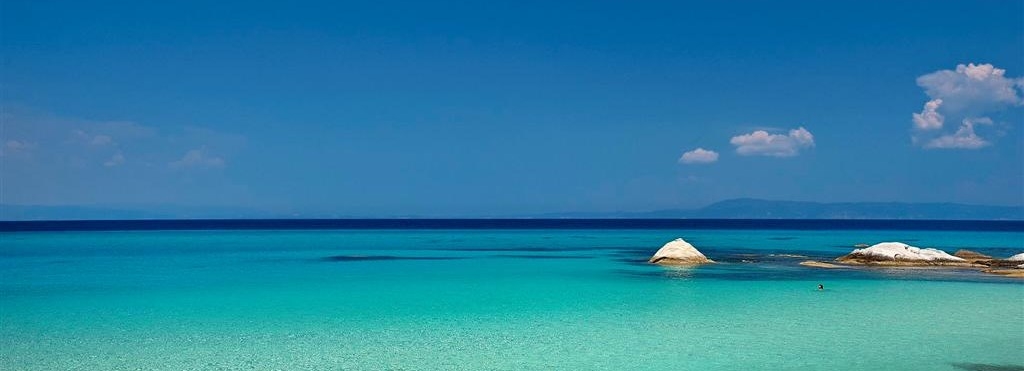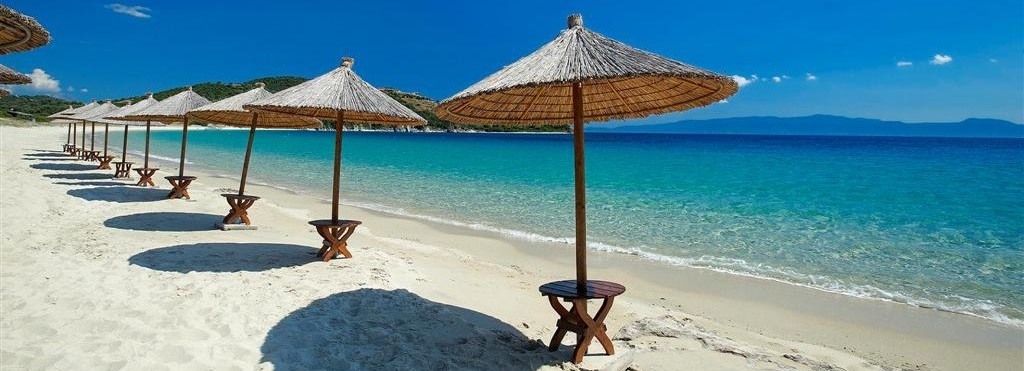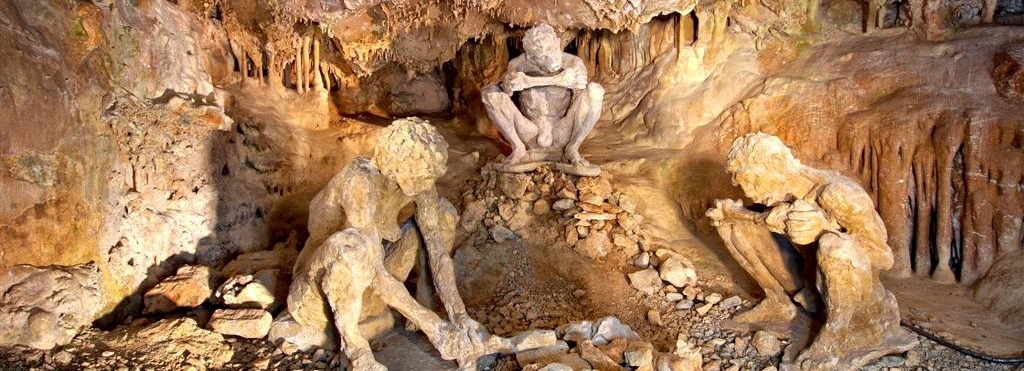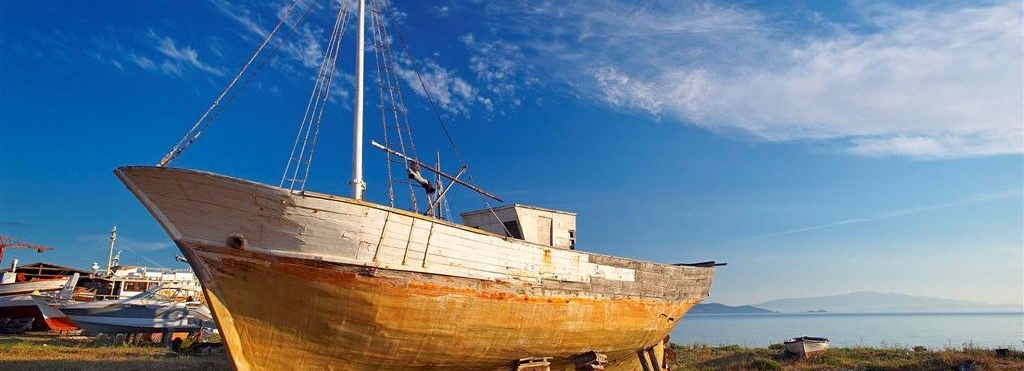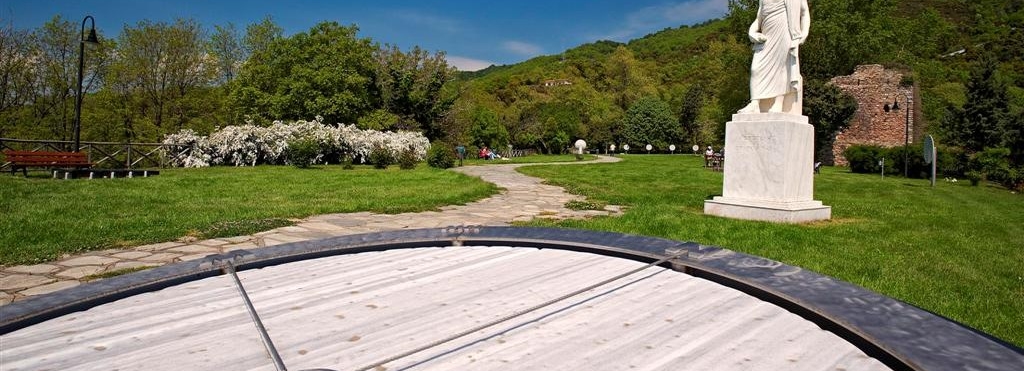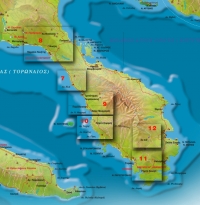Το Διοικητικό Συμβούλιο της Πανελλήνιας Ομοσπονδίας Επιχειρηματιών Τουριστικών Καταλυμάτων "Ο ΑΡΙΣΤΟΤΕΛΗΣ"
| Πρόεδρος | Παπαϊωάννου Τριαντάφυλλος |
| Γεν. Γραμματέας | Ηλιάδης Σωκράτης |
| Αντιπρόεδρος | Σταμάτης Αναστάσιος |
| Ταμίας | Καραλής Ιωάννης |
| Ειδικός Γραμματέας | Χουχούτας Ιωακείμ |
| Έφορος Οργανωτικού | Παυλούδης Ιωάννης |
| Έφορος Δημ. Σχέσεων | Ψέμμας Αθανάσιος |
16th ROUTE
The route commences in Polygyros and circles the hills around this hamlet, passing through a splendid natural landscape and offering a breathtaking view (2 ½ hours, altitude 942m.)
17th ROUTE
We begin our excursion in the mountainous village of Taxiarchis, amidst the firs, chestnuts and beeches. This route shall take us to village Vrastama and it is an ideal trekking trail throughout the year. (altitude 600m.).
18th ROUTE
One of the most difficult trails, it begins at the village Vrastama and passes the natural cave of Agios Efthymios, which used to be a hermitage but has been converted to a chapel, to end up back in village Vrastama. (altitude 540m.)
19th ROUTE
This route begins in village Palaiochora and you will walk in the verdurous Mt. Cholomon. The trail ends 4km. before we reach Taxiarchis. (altitude 960m.)
20th ROUTE
This last route begins in Olympiada and leads us to ancient Stageira, the land of Aristotle. The landscape as you tread the verdant trails is simply amazing.
13th ROUTE
A tour of the islet of Ammouliani. We take the ferry-boat from the port of Trypiti to reach the island. When we arrive at Ammouliani, we pass Alykes and reach the pavilion, where we can rest, and then return to the port. (2 hours, altitude 80m.)
14th ROUTE
This relatively each trail begins in Ouranoupolis and crosses olive groves and vineyards taking you back to Ouranoupolis. (2 hours, altitude 100m.)
15th ROUTE
There are 3 hotels between Ouranoupolis and Trypiti and this route passes through all of them, offering a splendid view of the Gulf of Holy Mt. Athos. (altitude 189m.)
7th ROUTE
In Sithonia, this route commences from the beach at Elia and Hotel Athena Palace and its direction is towards the barrow of Agios Pavlos, going a bit higher and reaching the barrow Petros which offers a breathtaking bella vista. The trail returns back to the beach at Elia (altitude 298m.).
8th ROUTE
From Nikiti and Agios Nikolaos this wooded trail passes the picturesque chapel of Prophet Elijah and then returns back to Nikiti. (altitude 214m.)
9th ROUTE
You will find this route in N. Marmaras and it will take you to the old traditional settlement of Parthenonas, culminating to the North of N. Marmaras at the Tavern Drosia, offering an unparalleled natural landscape. (4 hours, altitude 360m.).
10th ROUTE
From Porto Carras and the vineyards of the area, you shall walk along the coastal line, across beautiful beaches and small bays. At the hill you will enjoy a splendid view of Toroneos Gulf. (altitude 160m.).
11th ROUTE
This route begins at Porto Koufo and ends at Kapros in the southernmost end of the peninsula, where, when the weather is good, you may see the island complex of Sporades (altitude 273m.)
12th ROUTE
Beginning in Sykia this trail is a round trip of the surrounding hills and passes through beautiful pasturelands. (4 hours, altitude 345m.)
More...
1st ROUTE
Commencing in Stavronikita tower in the area of Sani, this trail passes through a beautiful forest and the wetlands in the area of N. Fokaia. It ends back to the tower (2½ hours reaching a maximum altitude of 22 meters).
2nd ROUTE
This trail also begins in the area of Sani and, more specifically, in Porto Sani Village and will take you to Siviri. The landscape is wooded and there are several spots offering a breathtaking view (round trip 20 km, altitude up to 60m.).
3rd ROUTE
Beginning in the beach at Poseidi and crossing the forest turnpike to Kallandra, the trail ends back on the beach. It is an easy trail, ideal for beginners but also remarkably beautiful. (2 hours, altitude 80m.).
4th ROUTE
This trail will take you from Polychrono through the forest located west of the settlement and up to the lake with the water turtles and back to Polychrono.
5th ROUTE
From Kryopigi, this trail shall take you to the small and picturesque village of Kassandrino, inside a beautiful forest (a long route reaching an altitude of 200m.).
6th ROUTE
From the village Hanioti you shall trek to the heart of the peninsula and reach a point offering a panoramic view of N. Skioni and a beautiful landscape. The trail shall take you back to Hanioti (altitude 300m.).
If you are a nature lover and interested in getting to know Halkidiki through forest trails and secluded beaches, then you must trek on the 20 routes mapped out and signaled with a trident. Routes 1-6 are in the peninsula of Cassandra, while 7-12 are located in Sithonia and 13-15 on the periphery of Mt. Athos, while 16-19 are on the hills around Mt. Holomon and no. 20 is located in the area of Olympiada.
Holy Community
Holy Administration: 23770 -23711, 23770 -23713
Head Custodian: 23770 -23710
Head Secretary: 23770 - 23710
Secretary: 23770 -23224
Fax: 23770 -23315
Holy Mt. of Athos Administration
Secretary: 23770 -23314
Governor: 23770 -23230
Deputy Governor: 23770 -23290
SERVICES
Police Precinct
Operator, Karyes: 23770 -23212
Captain: 23770 -23260
Hellenic Post (EL.TA.)
Karyes: 23770 -23214
Hellenic Telecommunications Organization (OTE)
Supervisor: 23770-23209, 23770-23990
Technical Services: 23770 -23314
Karyes Infirmary
Doctor: 23770-23217
Fire Department
Karyes Fire Station: 23770-23199
Cars for the transportation of pilgrims
Karyes: 23770-23266
Fasting is the abstention from specific kinds of food, or from eating altogether. Fasting is intended to cleanse the body and the soul and fortify the will.
